After an amazingly energetic and inspirational Face-to-Face, I have hewed out the essential aspects of my action plan for this year. Building on my thinking in the post “Festina Lente,” I have refined my year into the form of a HMW (How Might We) statement:
How might we determine how, when, and why thinking slowly is useful and when thinking quickly is useful, and how might we determine when and how to modulate between these kinds of thinking.
What my year really boils down to is a ‘deep dive’ into identifying what I think an effective thinker and reader will look like in what I now think of as the second wave of the digital age. Now that we know what some of the consequences are of digital media and omnipresent, fast-paced, overwhelming media and text sources, it is incumbent upon us as educators to rethink and reformat our practices to give our 21st-century students what they really need. They will need us more than ever to get them to slow down their thinking and to pay attention to details (starting with individual sentences and words in readings!). They will need to know when they should be fast, nimble, and expansive in their thinking (as they naturally are in this digital world), and when they need to pivot to slow, deliberate, and deep thinking. This modulation in thinking has never been self-evident, but it will become even less apparent and much more difficult in age where natural tendencies to move fast and shallow are reinforced by technology. Having set this lofty mission statement, here are the steps in my journey as I see it in November:
- Read/listen/watch broadly and deeply about best practices and the research in the fields of slow/fast thinking, brain-based pedagogy, the implications of technology for learning, etc.
- Consolidate my reading to create a profile of an effective 21st-century thinker, developing success criteria or look-fors for what this person would be like.
- Pre-assessment: Have students self-assess using criteria and look-fors. Pre-assess using criteria to see where students are coming from. Interviews and conversations with students.
- Embed skills coming from look-fors into instruction. Assess and give feedback. Constant collection of data.
- Evaluate data gathered and recalibrate for next steps.
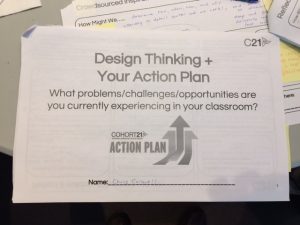


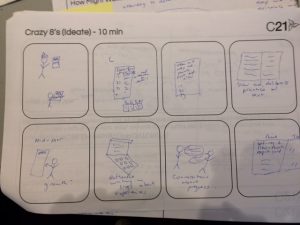

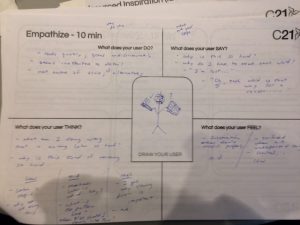

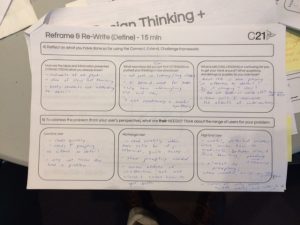
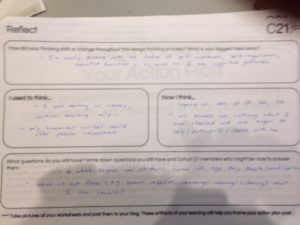
Hi Chris,
Your post really resonates with me: the tension between their needs and our needs; what we think they need to succeed, and what they desire to do in the hear and now. It’s a classic tension in education, I know!
That is why, I want to push you further on collecting data to consolidate it into a portrait of a 21st century learner. How will you do this? How will you know that your portrait is an accurate one? How can it encompass all without being too unwieldy?
I encourage you to include the students in your data collection. Ask them what they think they need, what they know they know, and what they know they don’t know. In this way, the conversation is including the end-user, and it is a learning experience for them too. In this way, you could include the parent body in your research as well – what are they seeing in their own employment? What books and research can they share?
Conversely, look again at the high-low-middle end users of what you’re after. Choose, perhaps one of them, and go deep there.
Good luck on this most excellent journey!
garth.
Some great tips, Garth! I am a novice when it comes to data collection, being a humanities student used to studying dead people. I’d love to pick your brain (and those of the community) when it comes to this kind of survey-data/social science-type research. If you think of any specific resources, could you stick them on my Google reading list?
Thanks for sharing, Chris!
I can’t wait to see where this takes you. I have found that students often believe that fast is better, and we don’t value slow thinking enough. I agree with Garth that it would be good to get some input from your students on this. Perhaps incorporating fast/slow thinking routines and having students reflect afterwards would be a good way to gain insight into their experience, and also to have them start to value both ways of thinking.
Please keep us posted!
Les
I had been thinking exactly the same thing about thinking routines, Les! Fusing together visible thinking and the idea of fast and slow thinking will be amazing experiment to be sure. There are a number of existing routines that could be tweaked along those lines from what I know from Making Thinking Visible and the thinking strategies from TC2.
Making Thinking Visible has a ton of great strategies – they also combine nicely with design thinking methods. @ddoucet uses visible thinking routines in his class, you might be able to share some ideas!
I had the chance to do two years of training at Havergal in Visible Thinking, so I have a well-worn copy of Making Thinking Visible. I’d love to share with @ddoucet and any other cohorters who use this approach!
@ccarswell have you seen some of these protocols? – http://www.visiblethinkingpz.org/VisibleThinking_html_files/03_ThinkingRoutines/03c_CoreRoutines.html
Lot’s of resources and explore and experiment with in Jan-April
Happy new year!
I’ve encountered most of these routines in various places but didn’t know there was a website where they had been collected and explained. Thanks @jmedved!